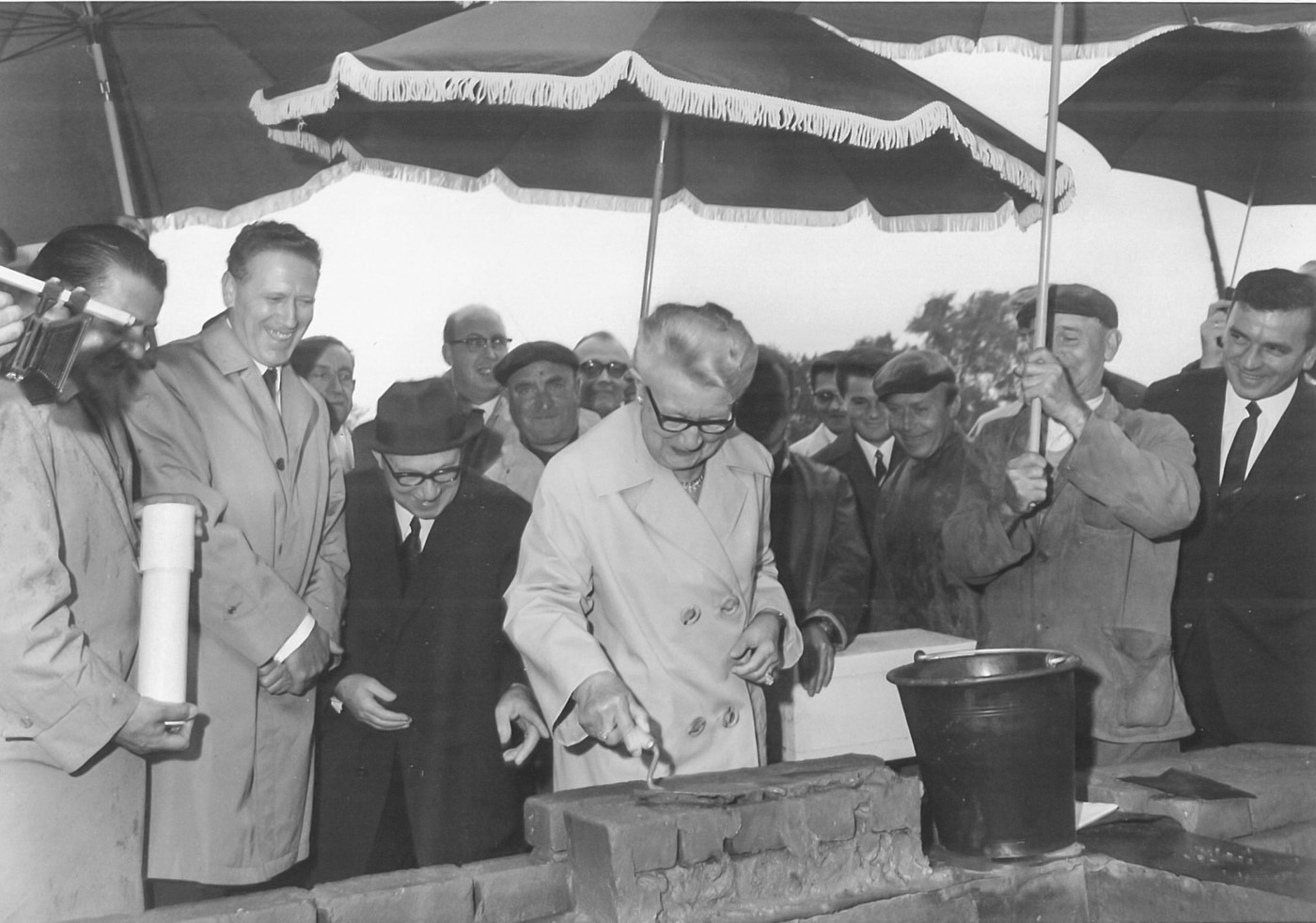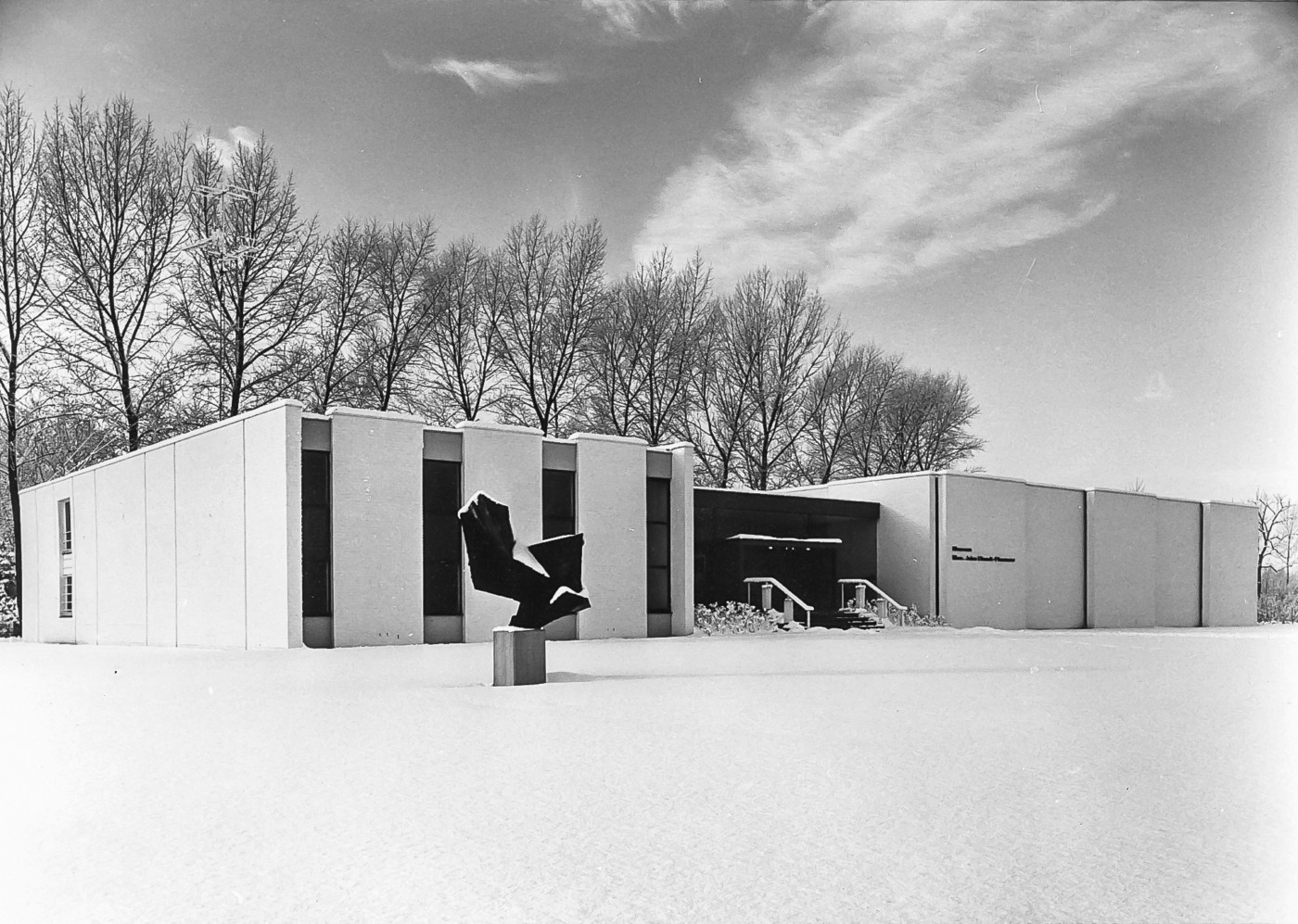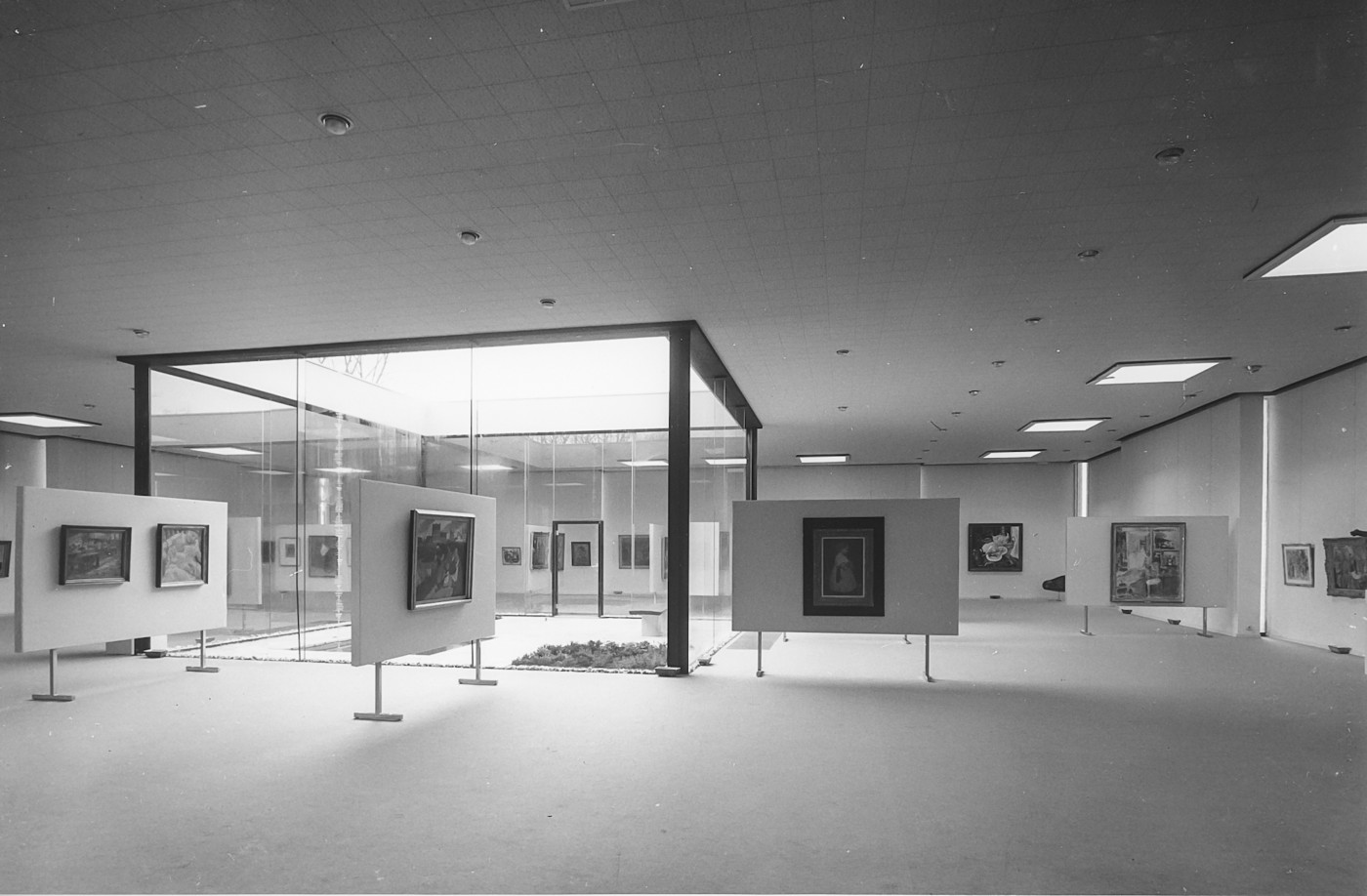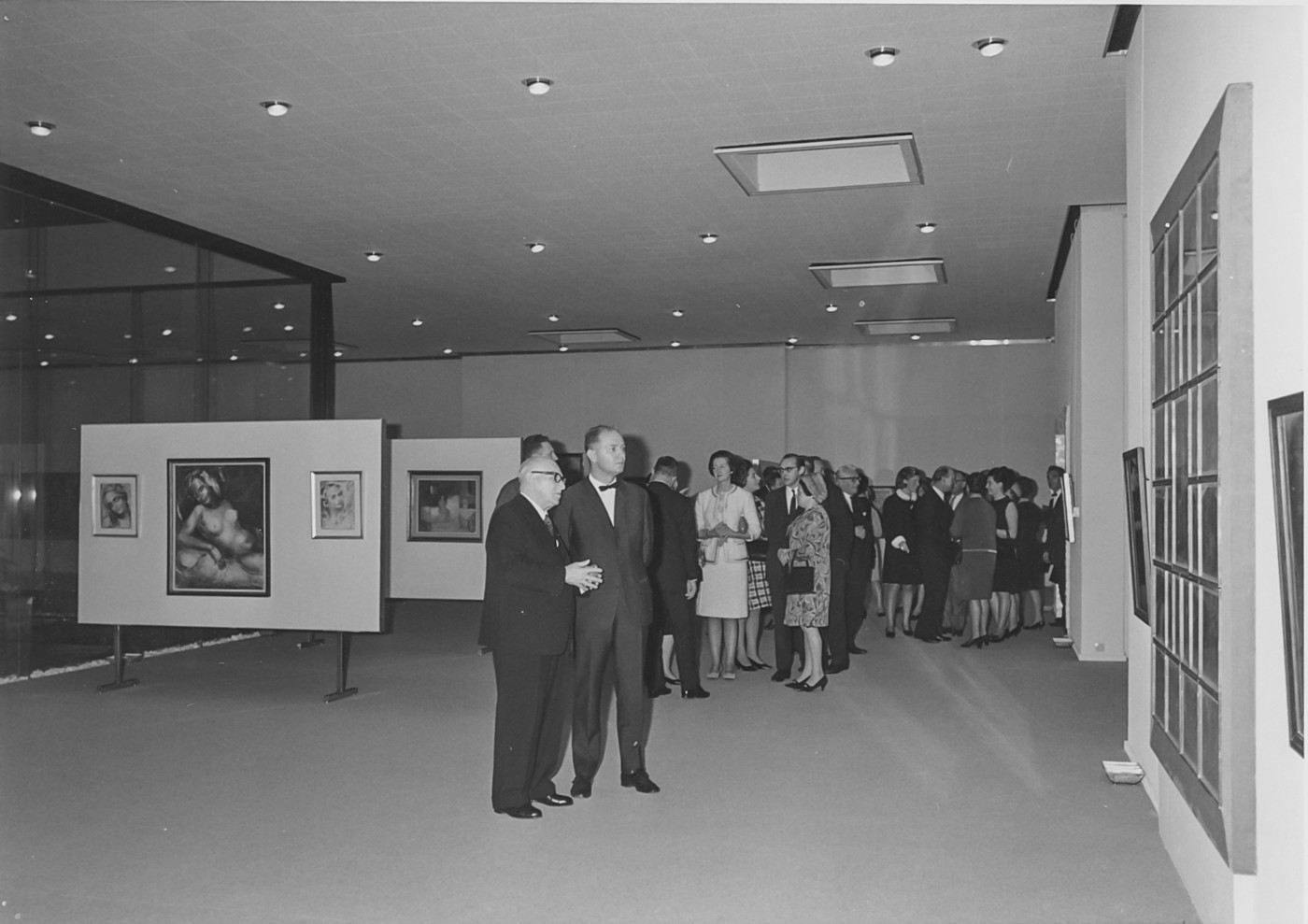about mdd
Mission and vision
Museum Dhondt-Dhaenens preserves studies and displays art from 1900 to the present.
MDD: museum of the 20th and 21st century
A cultural center avant la lettre. That is what Jules and Irma Dhondt-Dhaenens had in mind in 1968 when they decided to share their art collection with the general public. They deliberately did not do this in the city, but in a modernist museum building next to their home in Deurle, in the middle of the Leie region.
Over the years, their collection of paintings and sculptures by the then Flemish avant-garde—artists like Gust and Léon De Smet, George Minne, and Frits Van den Berghe—gradually became part of the classical canon. Meanwhile, social and political shifts have dramatically reshaped artistic practice. MDD’s collection has evolved alongside these changes, enriched by new donations and long-term loans, including works from the Andries-Vanlouwe Foundation. Today, it features renowned names such as Mark Rothko, Lucio Fontana, and Gerhard Richter, alongside contemporary artists like Michaël Borremans, Luc Tuymans, and Jan Van Imschoot.
While art has undergone radical transformations, the founders' mission remains unchanged: to make art accessible beyond collectors and experts. With three carefully curated exhibitions each year, MDD now focuses on later 20th- and 21st-century art, often in conversation with pieces from its collection. The goal is not to dismantle the divide between old and new art but to demonstrate that such a divide was never there to begin with.
A Haven for Artists
MDD is too small for large-scale retrospectives—and that’s its greatest strength. Artists love to showcase their work here—or better yet, create it on-site—taking advantage of the intimacy and scale of this compact museum on the outskirts of town.
Think of artists at a turning point in their careers, eager to explore new themes or techniques. Think of experimental work that benefits from dialogue with a curator, more time and space, or a personal approach. Here, artists have often actively involved the audience in their work, right in the museum itself. Such direct engagement is almost unthinkable in a large museum or art center.
The focus is on promising artists from Flanders. Berlinde De Bruyckere, Joëlle Tuerlinckx, and Dirk Braeckman, for example, held solo exhibitions here early in their careers. Because the bond between this place and artists is mutual, MDD has often been able to achieve remarkable international success, with memorable exhibitions by On Kawara, Thomas Hirschhorn, Santiago Sierra, and Blinky Palermo. Leading curators and art historians are also drawn to the unique energy of this space.
The Light, the Location
MDD is nestled at the end of a tree-lined avenue in Deurle, in a residential area near the picturesque bends of the Leie River. The painters of the Latem School sought out this region for its light—the same light that inspired architect Erik Van Biervliet in his design of the modernist museum building. Sunlight enters through the corners and patio, illuminating the artworks without overpowering them.
Over the years, the museum has retained its distinctive character while meeting strict museum standards. A renovation in 2024 even added an extra exhibition space.
The museum’s open setting within the landscape offers further possibilities. In addition to the sculpture garden, MDD includes the adjacent Wunderkammer (designed by Hans Op de Beeck) and the Van Wassenhove House (by architect Juliaan Lampens). These spaces open up opportunities for site-specific creations, presentations of loaned art collections, lectures and workshops, film screenings, artist residencies, and more.
Far from the bustle of the city, MDD invites visitors to engage deeply with art and take the time for conversation.
An Open House
“Museums offer a variety of experiences aimed at education, enjoyment, reflection, and the exchange of knowledge.” So states the new definition of ICOM, the international network of museums and art professionals. But what do these lofty words truly mean?
Artists want to communicate with an audience—that is why they create. Museum directors and curators, in turn, do everything they can to reach that audience, ideally as broadly and diversely as possible. They achieve this by dedicating time and space to artist talks, guided tours, workshops, publications, and various interactions with a wide range of people.
A small institution like MDD is uniquely positioned to excel in this. By making its programming and communication accessible, inviting more schools, and encouraging artists to develop their own educational programs, MDD fosters engagement on a personal level.
Don’t expect silent museum attendants here—MDD’s staff have stories to tell. In the sculpture garden, a beekeeper makes honey while local children play. Studio MDD blends art with hands-on creativity. A thriving membership and patronage program ensures that the museum continues to uphold the vision of its founders.
While major institutions seek ways to lower barriers, MDD has only one floor—no barriers needed.
History
In 1964, the Stichting Mw Jules Dhondt-Dhaenens was established by Jules Dhondt (1889–1969) and Irma Dhaenens (1892–1973) with the aim of "providing the means to actively contribute to the development of Flemish identity as a community and to elevate the level of its culture." Another key objective was to expand the collection through acquisitions, donations, bequests, and other contributions made available by Jules Dhondt or his wife.On November 30, 1968, the museum was officially inaugurated in a modernist building designed by architect Erik Van Biervliet. During the opening, Walter Van Beselaere, then curator of the Royal Museum of Fine Arts in Antwerp, addressed the large audience with the following advice:"Return to this museum alone, during the day, and preferably in sunlight. Only then will you truly absorb each painting, brought to life by the irreplaceable blessing of natural light, set against a bright interior and in continuous dialogue with the stunning Leie landscape that you can always admire through the museum’s vertical slit windows—extending all the way to the overarching sky, which remains a silent witness to this generous act of giving."
Beyond showcasing their personal collection, Jules and Irma also sought to organize cultural events and exhibitions. Until 1973, these exhibitions primarily featured artists from their collection or their close circles. With the appointment of then-mayor Antoon De Pesseroey as chairman, he and Jozef Mees began shaping the exhibition policy. During this period, Mees introduced progressive and sometimes radical exhibitions, while De Pesseroey maintained a more traditional approach.
By the late 1980s, Museum Dhondt-Dhaenens underwent a significant transformation, with a drastic shift in both its policies and the focus of its collection. Artists began to draw inspiration from the museum’s historical collection and modernist architecture. Their creative process and physical presence became integral to their work, moving away from a purely object-based approach. Artworks by David Tremlett, Perry Roberts, Richard Venlet, Rombouts-Droste, and Marthe Wéry explore the ambiguity of painting as a medium. In later years, the museum also presented groundbreaking projects by Santiago Sierra, Thomas Hirschhorn, and Thomas Lerooy.
Today, Museum Dhondt-Dhaenens is committed to producing exhibitions that highlight artists who have played a defining role in recent artistic movements but have yet to receive consistent recognition in Flanders or beyond. These projects often serve as pivotal moments in an artist's career. The museum embraces diversity in contemporary art rather than adhering to a single artistic trend.
A strong focus is placed on solo exhibitions, which allow for a deeper exploration of an artist’s intrinsic value compared to group shows. The museum strives to be a close partner to artists, fostering collaboration, dialogue, and mutual support in exploring the meaning and function of art. It offers a space for reflection, experimentation, and creation.
In recent years, Museum Dhondt-Dhaenens has built a strong tradition of working with artists who critically examine the museum as an institution, the role of the artist, and the relationship between art and its audience.
Directors
Goedele Bartholomeeusen (from 2023)
Antony Hudek (2020—2023)
Joost Declercq (2004—2019)
Edith Doove (1999—2004)

Jules & Irma Dhondt-Dhaenens, 1960s

Laying of the foundationstone of Museum Dhondt-Dhaenens, 1967

Museum Dhondt-Dhaenens, 1968

Interior Museum Dhondt-Dhaenens, 1968

Opening Museum Dhondt-Dhaenens, 1968